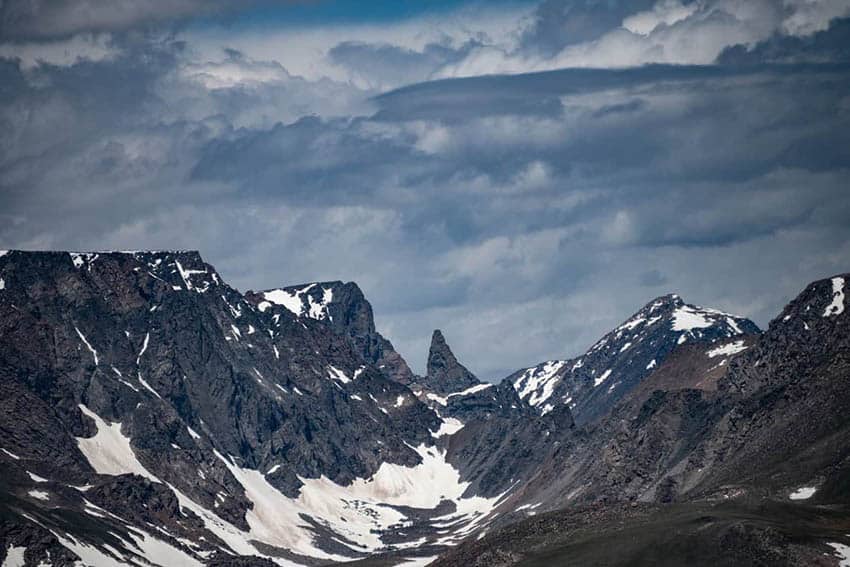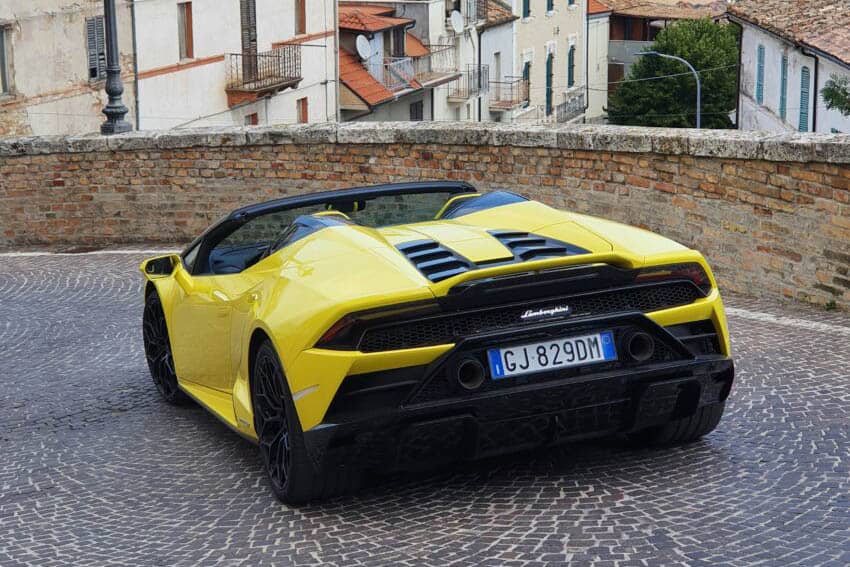
What it’s really like driving a supercar in Italy?
By Cindy-Lou Dale
GoNOMAD Senior Writer
I slid into the high-tech cockpit, flipped the cover of the Top Gun ignition, then triggered what sounded like a seismic event. The twin exhaust burst into a fire-breathing T-Rex roar, announcing the presence of a formidable beast.
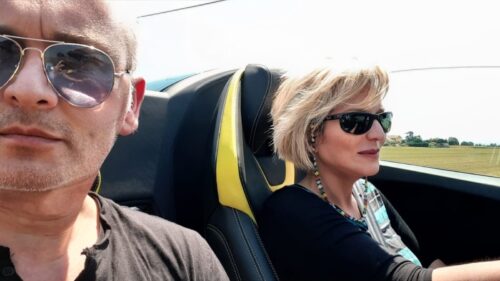
I’m at the wheel of a Lamborghini Huracan Evo Spyder – a supercar God, named after a famous Spanish fighting bull, and the closest thing I’ve driven to a street legal racing car.
The fuzz are all over me, like a bad suit.
Immediately I turned off the forecourt onto the road, the Carabinieri (Italian police) spotted me, and tailed me for some distance; and where one left, another took assumed its place.
On the autostrada (motorway) blue lights flashed behind me. The cop car accelerated and drove alongside. The passenger window was lowered, and the cop indicated that I should keep pace with his vehicle into the long tunnel ahead.
This provided an opportunity to demonstrate the Huracan’s acoustic abilities, which is what I assumed he was wanting.
Riding shotgun, his partner recorded the event on a mobile device. I felt certain this would later be used as evidence for the prosecution, but thankfully he waved me on with a broad grin and a little salute.
The Huracan is like a quail’s egg dipped in celery salt and served in Jason Mamoa/Keira Knightley’s belly button.
I’m driving towards the Le Marche region, the engine humming calmly in the background – as if it could hardly be bothered. Using nothing more than telepathy, the drive through the storied countryside was delicate.
On a mountain pass I dropped from ‘strada’ (street mode), into ‘corsa’ (race mode). I wasn’t ready for what was about to happen. The 640 hp naturally aspirated V10 changed from a terrific car into a snarling attack dog.
As the horizon begins to warp,every fibre in my being screams that I lift my foot off the accelerator
The chassis immediately dropped into the tyres, imbedding itself into the tarmac, begging that I stamp down on the accelerator. This is when the g-force surge hurls my head back into the Lamborghini embossed headrest.
The Huracan had a lot to shout about, and it does so with a nonstop mind-blowing soundtrack. An amplified, extreme driving experience, a death metal roar with limitless pops and bangs (7-speed dual clutch gearbox) – think Barry White eating a wasp.
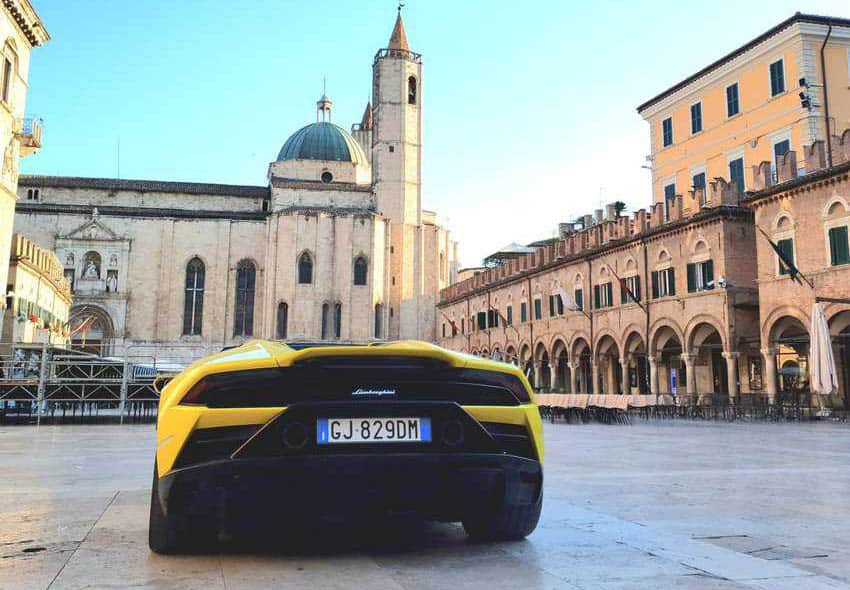
Many of the safety features are activate when in Sport mode but, I later discovered, in Corsa, they’re not!
And the speed? It’s no slouch. Doing 0-100 takes 3.5 seconds (and about 14 gallons of fuel). It hit the supercar holy grail of 325 km/h is seconds, which is when the jack-hammer choir really kicked in. It corners at sensational speeds, and the grip was astonishing. It’s undefeatable – and pure rock ‘n roll.
The ultra-light carbon fibre/aluminium materials used in construction further boosts its speed. The driver’s seat weighs less than some puddings I’ve eaten.
This is a car for the monied few.
The Huracan is not a practical travelling companion due to its limited interior and luggage space. The passenger compartment has all the bells and whistles you’d expect from the brand and overall has all the hallmarks of supercar stardom—including a six-figure price tag.
Despites its many unique qualities Lamborghini does share one thing with other high-end cars – the ability to empty your bank account. Lamborghini have learnt the art from Porsche – to charge more for less. This soft top RWD supercar, with all the extra’s you could throw at it, comes in at €223,000/US$233,000.
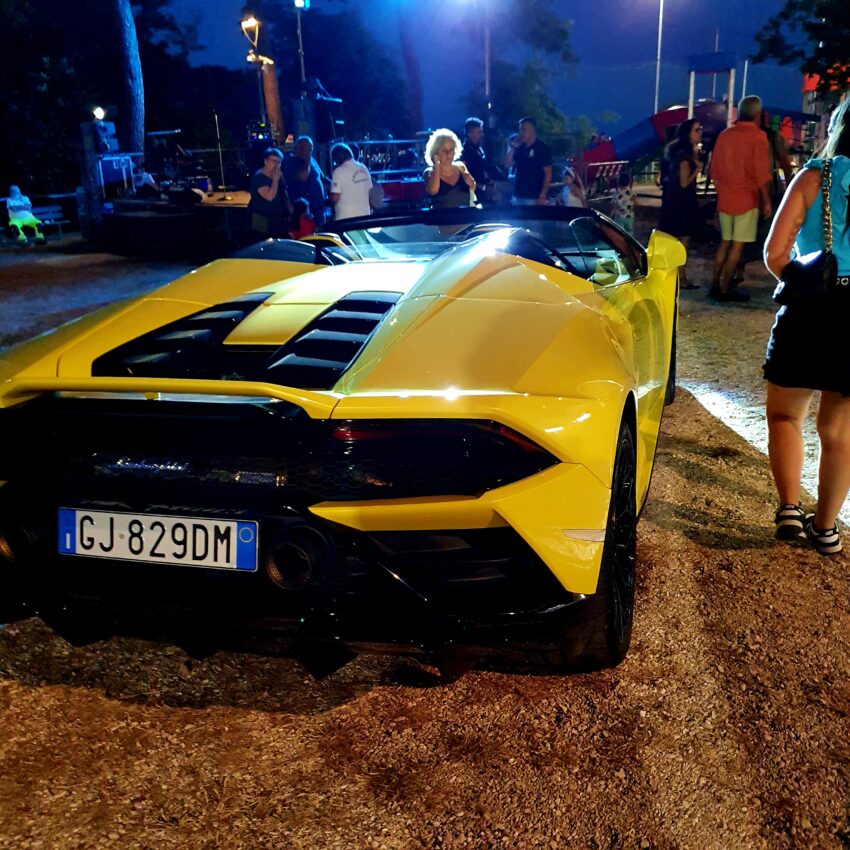
Proceeding down another motorway at a stately lack of haste (because of the relentless observation of the carabinieri), vehicles would tailgate for a minute or two – with mobile phones lighting up. Then they’d pass slowly, filming the car for later Instagram likes.
In the passenger seat is Roberto, my co-driver, who was asleep (and must be the first person in the world to do so in a Lambo!). So out there somewhere is a video of a canary yellow Huracan with a dozing, open mouthed passenger, mired on a cobweb of drool from his chin to the seat belt across his chest.
When he eventually woke, he began to fiddle with the radio, threatening to replace the Huracan’s audible roar with an Italian chat radio station.
I dissuaded him from doing so. For the next hour, he instead played with his seat adjustment buttons. Clearly it was time for him to drive.
I pulled in at a service station to introduce a shot of coffee to my lips. Whilst the engine was ticking itself cool, Roberto topped up the fuel tank (we’re talking 14.9km/100).
I threaded my way through the crowd that had gathered around the car and ceremoniously handed the FOB to Roberto.
Now I could survey the countryside and continue my observations of the pathologically aggressive driving habits of the Italians who pay no attention to anything happening on the road around them – until they see a supercar.
One such driver, travelling at 130km/h took both his hands off his steering wheel to film the Huracan on his mobile phone.
This is Italy, the heart of Western civilization. Home to opera, the Vatican, the Renaissance, da Vinci, Armani, and the supercar.
The roads through the mountain regions in Le Mache uncurled before me. They were perilous beyond words, with impossible bends and sheer drops from unimaginable heights. Yet with each turn of the steering wheel, I felt certain I was drawing a line through physics.
This is truly a driver’s car – the soft-top only adds to the theatre.
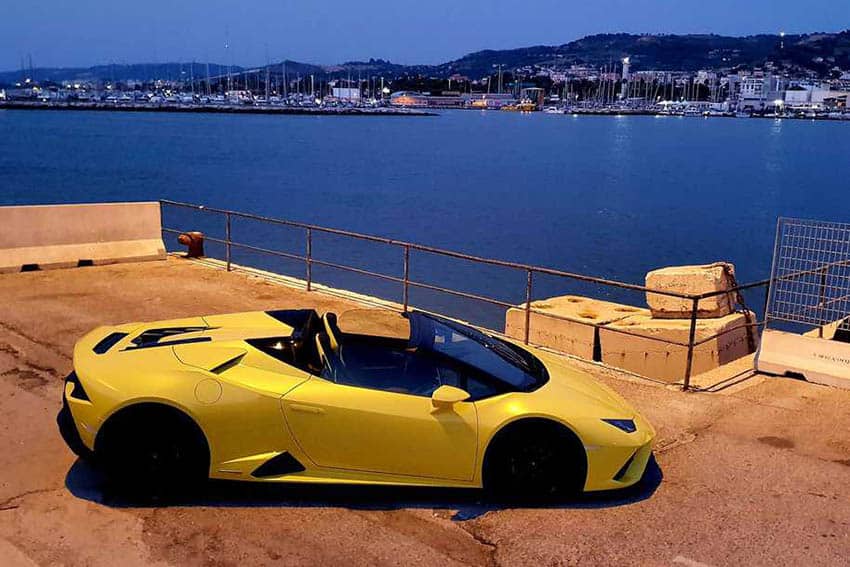
I soon became blasé about the attention the Huracan’s curvaceous and exotic beauty attracted. This is hard-core automotive pornography, drawing lustful looks from everyone who gazed upon it.
Parked up in a village, I stood off to one side studying the dramatics of the locals in the presence of their iconic automotive dream: their hands caressing the Y-slanted headlights, the flared air-intakes and wheel arches.
If I had to nit-pick, and obviously I do, my only criticism is… Nope. I have none.
Driving this car saddens me as thanks to the economy, the environment, the war on speed, and oil prices, cars like this will soon be confined to the history books. I just have a horrible feeling that what I am driving here is an ending.
https://italyluxurycarhire.com/
Mountain Villages Visited
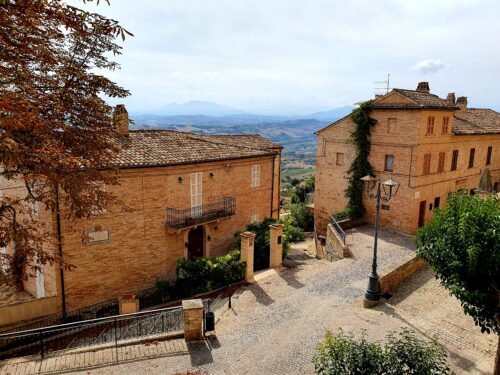
It’s evident that being European demands much of its citizens. They need to drive a small car, live in an ancient town filled with cavernous and gothic cathedrals where their little home are buried under roses – and of course, you need to love soccer, and be designer label conscious.
It’s about detail – the cuffs, the collars, and the positioning of buttons on a garment. It’s about tradition – the gargoyles, the quiet crevices and moss-softened corners, the grandness and piety of old stone.
In the Le Marche region, chasing lengthening shadows, I made regular stops in areas of quiet prosperity all rooted to an ancient past; charming and dreamy Italian villages where houses disappeared into treetops.
Small shops with their doors and shuttered windows open, and sidewalk cafes were people sat almost motionless with their newspapers and little espressos – above them colourful banners of washing hang between apartment balconies.
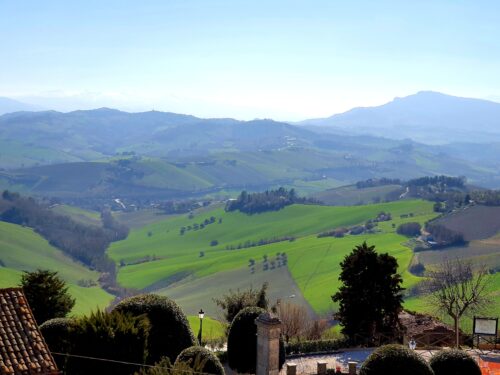
Torre di Palme is a preserved 6th century town which must be one of the most romantic locations in all of Italy – narrow cobbled streets, terracotta facades, low hanging archways, frescoes, blossoming bougainvillea, a small bell tower, the Gothic Church of Sant’Agostino, and taking pride of place is the medieval castle clinging to the hill.
Lapedona
The views are broad and framed from a panoramic balcony looking out across the Adriatic.
Lapedona is a small village which holds great religious significance to Catholicism. Here, in 1100AD, the Congregation of the Clareni Friars arose – one of first eremitical communities of central Italy.
The parish church of Santa Maria houses a collection of preserved artworks, vestments, sacred objects, tabernacles, procession lamps and votive offerings, including a priceless piece by Vittore Crivelli entitled ‘Polyptych’ and signed, at the base of Madonna’s throne, by the artist in 1489. In the western world you’d expect such objects to receive 24-hour armed security. But here the church stands open.

Dinner: An evening of wine and poetry at Due Cigni II, a restaurant in Montecosaro Scalo, progressed to a gastronomic affair created by celebrity chef Rosaria Morganti who reinvents ancient recipes, presenting haute cuisine for the 21st century palate.
The chef brings something else to the plate besides food – her own formula is about traditional ingredients which she uses in a different way, reflecting the regions art and music – giving you a sense of place, taking memories of food and interpreting them in a modern way.
In Altidona archaeologists found traces of the ancient ‘Pelasgians’ – a Greek tribe of some 150,000 years ago. Then came the Piceni, and in 485BC the Romans showed up. Altidona’s first castle sank into the sea, then in the 12th century, townsfolk built a new one on the hill, whose medieval walls have been painstakingly preserved.
The Belvedere, a medieval watchtower, overlooking the Aso Valley and beautiful villas, dotted between pine forests and millenary palm trees, houses ancient art.
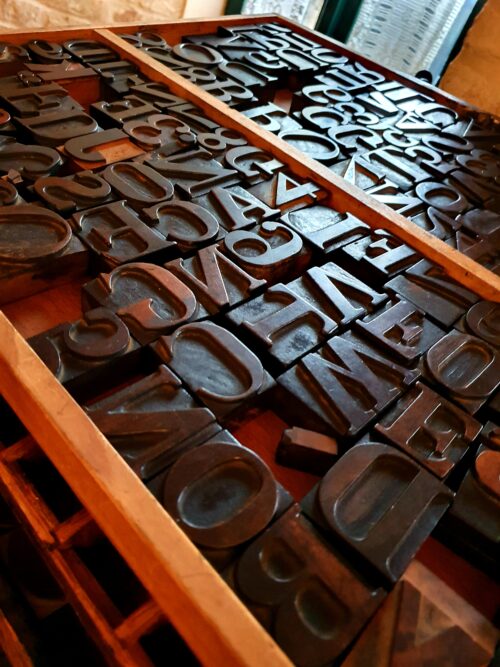
Unlike the other villages in the region, is Petriolo, with sweeping views across the peaks of the Sibillini mountains, and Gran Sasso d’Italia, to the Adriatic Sea, there is no typical main square with a town hall and government buildings.
Within the castle walls medieval buildings line the narrow, paved streets. They’re crammed with craft workshops, quirky museums, ancient churches, coffee bars, eateries like Osteria Delle Cornacchie serving Italian home cooking (try their Vincisgrassi), and for dessert, Bar Gelateria Tre Archi serves the best ice-cream you’re likely to sample in Italy.
But the town’s crowning glory is their theatre. Think London’s Royal Opera House, but a fraction of the size, complete with a Sistine chapel-type ceiling.
If you’re not into slopping around museums or art galleries, I feel you, but often there is an exception that needs looking at. In this instance it’s Petriolo’s Antica Stamperia Fabiani – a living museum of beautifully restored, fully functional, 19th century printing presses.
Eccentric Proprietor
Eccentric proprietor, Giancarlo Fabiani, introduced me to his machines and printed a few samples using original cherrywood characters. “This was the type of printing press the New York Times used back in the day when they produced 20,000 copies of their daily newspaper.”
This fact gladdened his heart. “But what blows the minds of my workshop students is that this was the same system used by Gutenberg when he printed the first Bible – the earliest major book printed using mass-produced moveable metal type in Europe.”
A local spoke of Petriolo’s collection of ghosts. The most feared is the German nun from a local monastery. It is said that those who acquire properties that she once owned are tormented to madness by her spirit. Another claim is that on the road between Petriolo and neighbouring Moresco, witches prevent safe passage from one town to the next. The council office records of year 1600 noted they’d burned the witches at the stake.
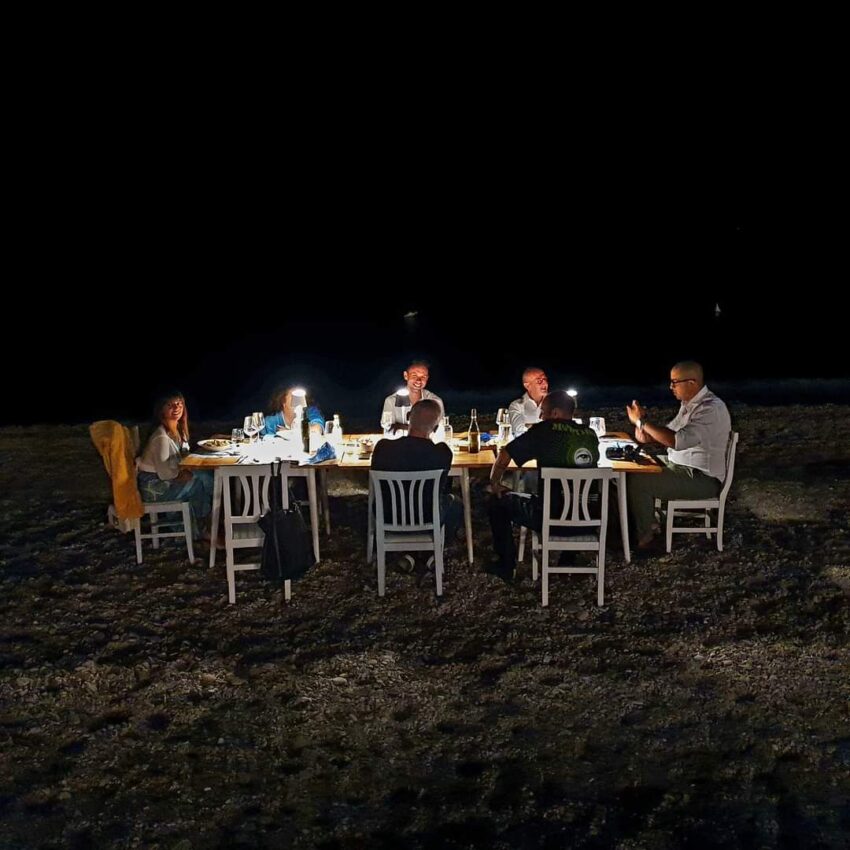
Dinner: End the day with the most romantic dinner ever, at Controvento, a beach cabin restaurant in Sant’Elpidio.
Think pink sunset, beautifully dressed dinner table on the beach, with the lapping Adriatic just a few feet away, and the wine-paired food arriving in waves of gastronomic delight.
What immediately identifies Moresco is its 12th-century heptagonal tower, and innumerable archways that frame jaw-dropping landscape views. Moresco was first recorded in 1083 (evidence of its existance was found on parchment paper of that time).
Since then, its castle has been home to colorful occupants from Lords and Counts to clergy and a military garrison.
Gianni Angelini, resident artist, and Town Mayor, says their 16th-century church bell still chimes every day in alternate succession with the bell on the Clock tower, which was built to guard what was the entrance to the castle. Legend has it that the church was built to commemorate the mother of St. Sofia, who was born in the castle.
Moresco’s Historic Center: 50 Inhabitants
Moresco’s historic center has just 50 inhabitants and includes a bakery who create fig pizzas around Christmastime each year which, bizarrely, draws people from across the country. Monterubbiano, once home to the famed renaissance painter, Vincenzo Pagani, outshines all the other cobblestoned hilltop towns and villages. It’s the kind of place that will have you catch your breath and, simultaneously, have it taken away.
Surrounded by Castellane walls, there are three access gates which are well worth seeing. The 13th century Jewish Ghetto is something to behold. Back then the Jewish community manufactured textiles and tanned leather. Now the workshops and community have disappeared but the remains of the ancient synagogue, the tiny houses, and shops, once all connected to one other, are still there.
Bizarrely, at the archway entrance to Via dei Segreti, a transit ban sign for military wagons remains. It’s not all that surprising, Monterubbiano was here three centuries before Christ!
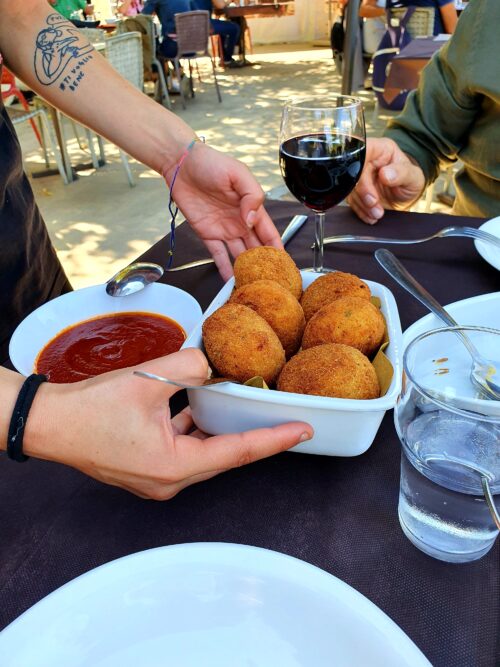
Lunch: There is only one true way to get to know a regions food. And that’s to go there and eat the food amongst the people who cook it and eat it every day. That way its seasoned with a sense of the place, the landscape, the culture, and the traditions.
With the simplicity of rustic staples, it’s guaranteed love at first bite. Which was exactly what I experienced when presented with the Chef’s specialty – Tagiatelle frittes at Monterubbiano’s outdoor restaurant – Il Coccaro.
Village of Monteprandone with the Supercar
The medieval village of Monteprandone is perched on a hill in the Marche hinterland whose original castle was founded by a Knight of Charlemagne. The views across the deep valley’s to the Adriatic Sea are endless.
This is soon followed by a craft beer festival. In addition to these festivals, in late November, there are great festivities in celebrating the life of patron saint San Giacomo della Marca.
Acquaviva Picena, a small village on the opposite hill to Montaprandone, with breath-taking views over the Apennines and the Adriatic Sea.
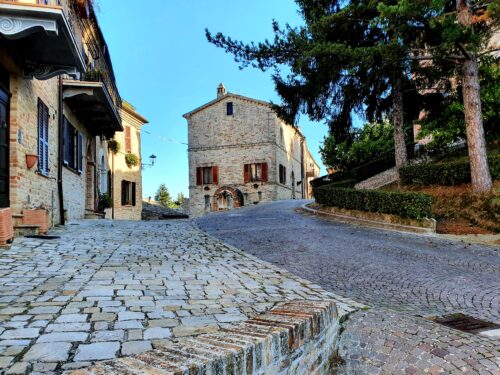
The village has a 15th century fortress which is a masterpiece of Renaissance military architecture. Here the village tradition is to weave straw baskets, carried out in a method handed down through the generations.
These mountain villages are rare places. I walked the cobbled passageways agog at such a concentration of perfection. I never once saw a street I wouldn’t want to live on, a cafe I wouldn’t like to get to know, a view I wouldn’t wish to call my own.
It’s hard to accept that it’s real – and that people come home to these houses every night, shopped in these tiny shops, walked their dogs on these cobbled streets, and went through life thinking that this is the way of the world.
- It’s Carnival Time in Offida, Italy - January 16, 2024
- Supercar Drive: The Bad A$$ Raging Bull - December 21, 2023
- Under the Tuscan Sun on a Farm in Chianti - November 30, 2023


